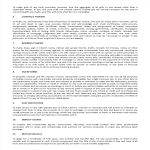Mental Health Treatment Plan

Enregistrer, Remplir les champs vides, Imprimer, Terminer!
What are the steps involved in writing a mental health treatment plan? Why is mental health treatment necessary? Download our template now and get started today!
Prix: USD 2.99
Téléchargez-le maintenant

Formats de fichiers premium disponibles:
.docx- Ce document a été certifié par un professionnel
- 100% personnalisable
Life Privé Health Santé healthcare soins de santé mental health treatment plan plan de traitement de santé mentale mental health santé mentale health treatment plan plan de traitement de la santé medical healthcare soins médicaux medical médical mental health treatment traitement de santé mentale Soap Note notes SOAP SOAP SOAP Note Example Exemple de note de SOAP what is soap notes for massage qu'est-ce que les notes de SOAP pour le massage massage therapy soap notes pdf soap notes for massage therapy free free soap notes template modèle de note de SOAP gratuit abmp soap notes clinic SOAP notes notes de SOAP clinique massage therapy progress report sample soap notes app soap notes examples medical release form for adults medical release form pdf printable medical release form authorization to release medical records medical record request form release of information form
What are the steps involved in writing a mental health treatment plan? Why is mental health treatment necessary? We have created a comprehensive template that covers all the necessary information needed to create a successful treatment plan. It includes goals for treatment, risk assessment, and strategies for managing symptoms. Download our template now and get started today!
B: Define goals
C: Setup the treatment plan
Try out our online Free and Premium Professional templates, forms, and contracts today. Save, fill in the blanks, print …and done!
A mental health treatment plan is a document that contains and outlines the details of a client's current mental health issues and outlines the goals, targets, and strategies that will assist the client in overcoming mental health issues. To obtain the information needed to complete a treatment plan, a health worker must interview the client. The information gathered during the interview is used to write the complete treatment plan.
Steps to proceed when setting up the plan:
A: Mental Health Assessment
- Gather information. A psychological evaluation is a fact-gathering session in which a mental health worker (counselor, therapist, social worker, psychologist, or psychiatrist) interviews a client about current psychological problems, past mental health issues, family history, and current and past social problems with work, school, and relationships.
- Follow the sections of the evaluation. Most health facilities provide the mental health worker with a template or form to complete during the interview.
- Note behavioral observations. The counsellor will conduct a mini-mental-status exam which involves observing the client's physical appearance and his or her interactions.
- Make a diagnosis. The diagnosis is the main focus. Sometimes a client will have multiple diagnoses such as both Major Depressive Disorder and Alcohol Use. Diagnoses must be completed before a treatment plan can be completed.
- Determine reachable goals
- Once you have completed the initial assessment and made a diagnosis, you will want to think about what interventions and goals you might want to create for treatment.
- Think of interventions. The interventions are the meat of change in therapy. Your therapeutic interventions are what will ultimately evoke change in your client.
- Discuss goals with the client. After the initial assessment is conducted, the therapist and client will collaborate to create appropriate goals for treatment.
- Make concrete goals for treatment. The goals are also what make up a large component of the treatment plan. Use the SMART method
- Record the treatment plan's components. The treatment plan will consist of the goals that the counselor and therapist have decided on. Many facilities have a treatment plan template or form that the counselor will fill out. Part of the form may require that the counselor check boxes that describe the client's symptoms.
- Write down the goals. Your goals need to be clearly defined. Remember the SMART goals plan and make each goal specific, measurable, achievable, realistic, and time-limited.
- Express specific interventions you will use. The counselor will include treatment strategies the client has agreed to.
- Sign the treatment plan. Both the client and the counselor sign the treatment plan to show that there is an agreement on what to focus on in treatment.
- Review and improve as needed. No plan in perfect. You will be expected to complete goals and make new ones as the client progresses in treatment. The treatment plan should include dates in the future when the client and counselor will review the progress the client is making. Decisions to continue the current treatment plan or to make changes will be made at that time.
Mental health treatment is necessary for several important reasons:
- Promotes Well-Being: Mental health treatment helps individuals achieve and maintain emotional, psychological, and social well-being. It can enhance their overall quality of life, leading to increased happiness and life satisfaction.
- Addresses Mental Health Disorders: Mental health treatment is essential for individuals with diagnosed mental health disorders such as depression, anxiety, schizophrenia, bipolar disorder, and others. These conditions often require professional intervention to manage symptoms effectively.
- Reduces Suffering: Mental health disorders can cause significant distress, suffering, and impaired functioning. Treatment aims to alleviate these symptoms, improving the individual's daily life and reducing their emotional pain.
- Improves Functioning: Effective mental health treatment can enhance a person's ability to function in various aspects of life, including work, relationships, and daily activities. It helps individuals regain their independence and productivity.
- Prevents Escalation: Early intervention through mental health treatment can prevent the escalation of mental health issues. Addressing symptoms promptly can reduce the risk of more severe and chronic conditions developing.
- Reduces Risk of Suicide: Mental health treatment is crucial for individuals at risk of suicide or self-harm. Professionals can assess and provide appropriate support to mitigate these risks.
- Enhances Coping Skills: Treatment equips individuals with the skills and strategies needed to cope with life's challenges, stressors, and adversities. It fosters resilience and adaptability.
- Supports Recovery: For those with chronic mental health conditions, treatment provides ongoing support and strategies for managing symptoms, facilitating recovery, and preventing relapse.
- Promotes Self-Awareness: Through therapy and counseling, individuals gain insight into their thoughts, emotions, and behaviors. This self-awareness can lead to personal growth and positive life changes.
- Reduces Stigma: Mental health treatment helps reduce the stigma surrounding mental health issues by promoting open dialogue and understanding. It encourages individuals to seek help without fear of judgment.
In summary, mental health treatment is necessary to alleviate suffering, improve functioning, prevent further deterioration, and promote overall well-being. It plays a critical role in addressing mental health disorders, enhancing resilience, and supporting individuals on their path to recovery and a fulfilling life.
AVERTISSEMENT
Rien sur ce site ne doit être considéré comme un avis juridique et aucune relation avocat-client n'est établie.
Si vous avez des questions ou des commentaires, n'hésitez pas à les poster ci-dessous.


